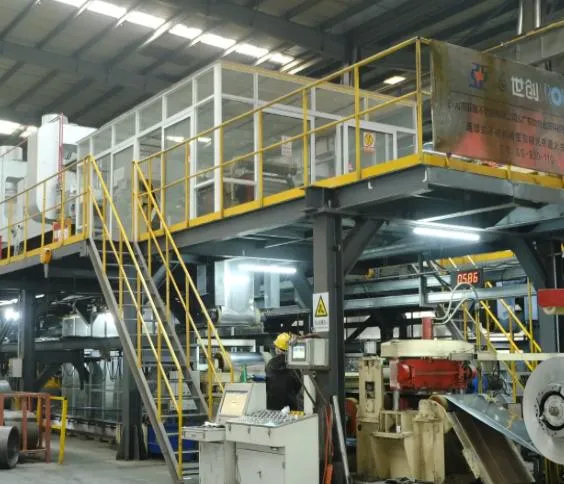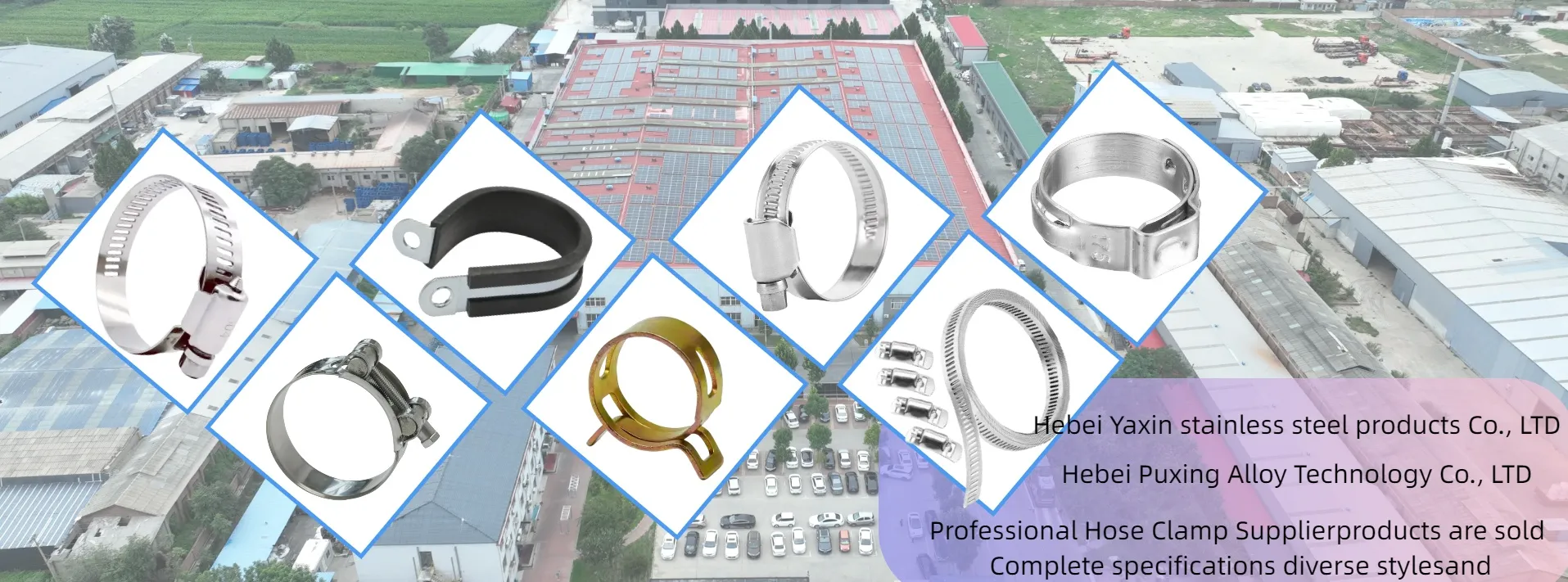- Phone:+86-17331948172 +86-0319-8862898
- E-mail: inquiry@puxingclamp.com
Jul . 28, 2025 10:45 Torna à a lista
Formability and Fabrication Techniques for 201 Stainless Steel Strips
Stainless steel strips are foundational to industries ranging from automotive manufacturing to food processing, offering a blend of strength, corrosion resistance, and versatility. For wholesalers supplying 201 stainless steel strip, 301 stainless steel strip, and 304 stainless steel strip, understanding their formability and fabrication nuances is critical to meeting bulk buyer demands. This article explores how these alloys behave under fabrication processes, their unique advantages, and best practices for wholesalers to optimize procurement and distribution strategies.

Formability of 201 Stainless Steel Strip: Balancing Cost and Performance
201 stainless steel strip is a cost-effective, nickel-reduced alloy (containing manganese and nitrogen) favored for applications where high corrosion resistance is secondary to budget constraints. Its formability is moderate, making it suitable for basic bending, stamping, and shallow drawing. However, its lower nickel content (compared to 304 stainless steel strip) increases work-hardening rates, which can lead to cracking during aggressive forming.
Key fabrication considerations for wholesalers:
Annealing Requirements: 201 stainless steel strip often requires intermediate annealing during multi-stage forming to relieve stress and prevent brittleness.
Tooling Maintenance: Due to its abrasive nature, tool wear is higher than with 304 stainless steel strip. Wholesalers should advise bulk buyers to use carbide-tipped tools.
Typical Applications: Decorative trims, cookware, and low-stress automotive components.
For wholesalers, positioning 201 stainless steel strip as a budget-friendly option for indoor or non-corrosive environments can attract cost-conscious manufacturers.
301 Stainless Steel Strip: Mastering High-Strength Fabrication
301 stainless steel strip stands out for its exceptional work-hardening properties, achieving high tensile strength through cold working. This makes it ideal for applications requiring durability and spring-like elasticity, such as automotive springs, conveyor belts, and aerospace fasteners.
Fabrication techniques optimized for 301 stainless steel strip:
Cold Rolling and Stamping: The alloy’s ductility allows deep drawing and complex stamping without cracking, though post-forming heat treatment may be needed to reduce residual stress.
Precision Bending: Its ability to harden during deformation ensures formed parts retain shape under load.
Welding Challenges: While weldable, 301 stainless steel strip is prone to carbide precipitation. Wholesalers should recommend low-carbon variants or post-weld annealing for critical applications.
Bulk buyers in automotive and electronics sectors value 301 stainless steel strip for its strength-to-weight ratio. Wholesalers can differentiate offerings by providing certified mill test reports confirming mechanical properties.
304 Stainless Steel Strip: Versatility in Corrosive Environments
304 stainless steel strip is the gold standard for corrosion resistance, making it indispensable in food processing, marine hardware, and chemical equipment. Its formability is excellent, though less malleable than 301 stainless steel strip, requiring careful handling during fabrication.
Fabrication best practices for 304 stainless steel strip:
Welding and Machining: Low thermal conductivity demands slower machining speeds and coolant use. TIG or MIG welding is common, but sensitization (chromium carbide formation) must be managed with low-heat techniques or stabilized grades.
Deep Drawing: The alloy’s high elongation allows deep drawing, but springback can occur. Wholesalers should highlight the need for precision tooling adjustments.
Surface Finishing: Easily polished or brushed, 304 stainless steel strip is ideal for aesthetic applications like architectural cladding.
For wholesalers, emphasizing 304 stainless steel strip’s compliance with FDA and NSF standards can attract buyers in food and pharmaceutical industries.
Procurement Strategies for 301 Stainless Steel Strips
Alloy-Specific Sourcing: Partner with mills specializing in specific grades (e.g., 301 stainless steel strip for automotive springs) to ensure consistent quality.
Custom Slitting Services: Offer precision slitting to custom widths, reducing waste for bulk buyers.
Inventory Management: Stock 201 stainless steel strip in thinner gauges (0.5–2mm) for cost-sensitive buyers, while prioritizing 304 stainless steel strip in heavier gauges for industrial clients.
By aligning procurement with client industries (e.g., automotive, construction), wholesalers minimize overstock and maximize margins.
FAQ: 301 Stainless Steel Strip Fabrication and Wholesale Procurement
Why is 301 stainless steel strip preferred for spring manufacturing?
301 stainless steel strip work-hardens during forming, achieving high yield strength and fatigue resistance, essential for springs and clips.
Can 201 stainless steel strip be used in coastal environments?
No. 201 stainless steel strip’s low nickel content makes it prone to pitting in chloride-rich environments. Recommend 304 stainless steel strip for marine applications.
What certifications are critical for 304 stainless steel strip in food processing?
Certifications ensure 304 stainless steel strip is safe for food contact, resisting corrosion from acidic or alkaline substances.
How can wholesalers reduce lead times for custom 304 stainless steel strip orders?
Collaborate with mills offering just-in-time slitting and precision edge conditioning. Maintain buffer stock of common grades like 304 stainless steel strip.
Does 301 stainless steel strip require post-forming heat treatment?
Depends on the application. For high-stress components like aircraft fasteners, stress-relief annealing is recommended to prevent premature failure.
For wholesalers, mastering the formability and fabrication nuances of 201 stainless steel strip, 301 stainless steel strip, and 304 stainless steel strip is key to unlocking value in competitive markets. By tailoring procurement strategies to alloy-specific strengths—whether cost efficiency, high strength, or corrosion resistance—distributors position themselves as strategic partners in industrial supply chains. As industries increasingly prioritize precision and durability, wholesalers who deliver certified, application-ready stainless steel strips will dominate bulk markets, driving growth and client loyalty.
-
Material Selection for Corrosion Resistance and Durability in 1.5 Hose Clamps
NewsJul.28,2025
-
Maintenance and Longevity: Prolonging Worm Hose Clamp Lifespan
NewsJul.28,2025
-
Installation Challenges and Tool Requirements Across 104 Hose Clamp
NewsJul.28,2025
-
Innovations in Spring Hose Clamp Technology: Smart and Sustainable Solutions
NewsJul.28,2025
-
Formability and Fabrication Techniques for 201 Stainless Steel Strips
NewsJul.28,2025
-
Corrosion Resistance in Environments: A Guide for Washer Hose Clamps
NewsJul.28,2025




